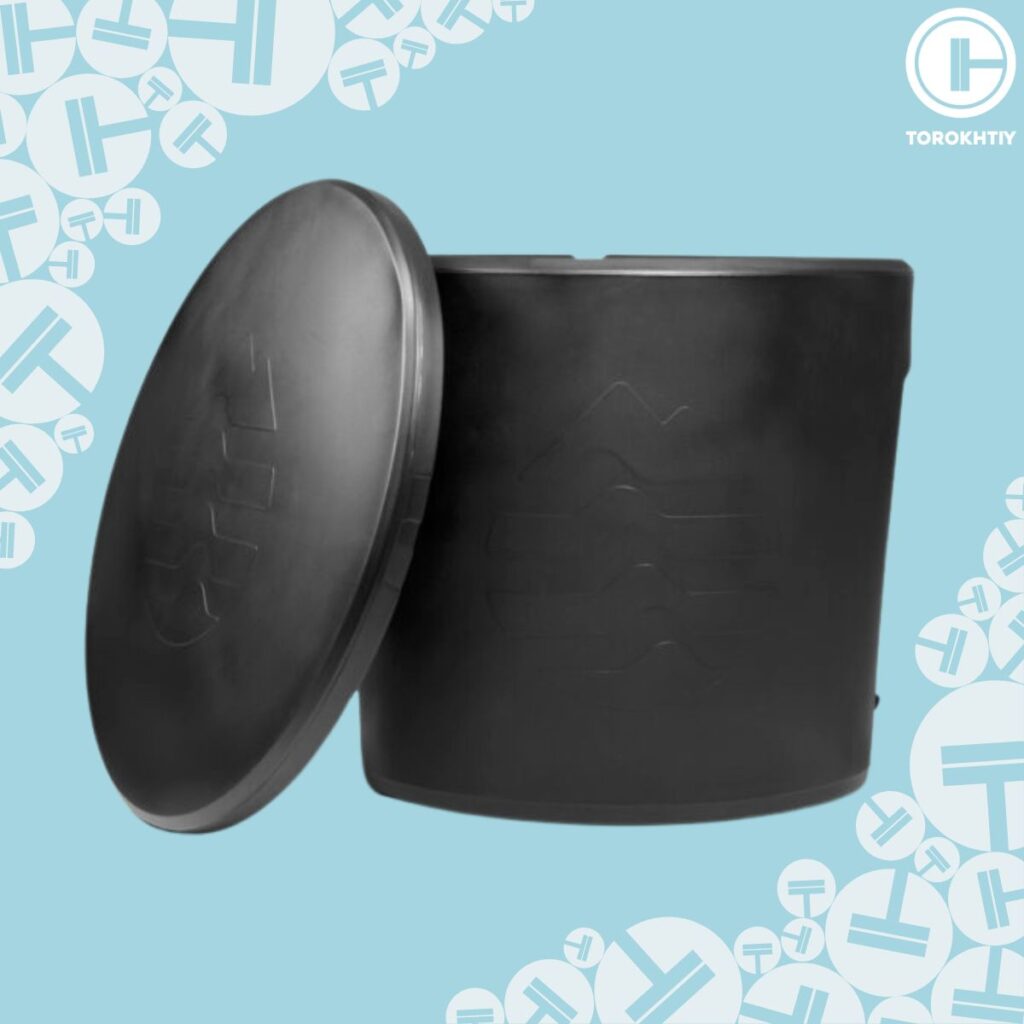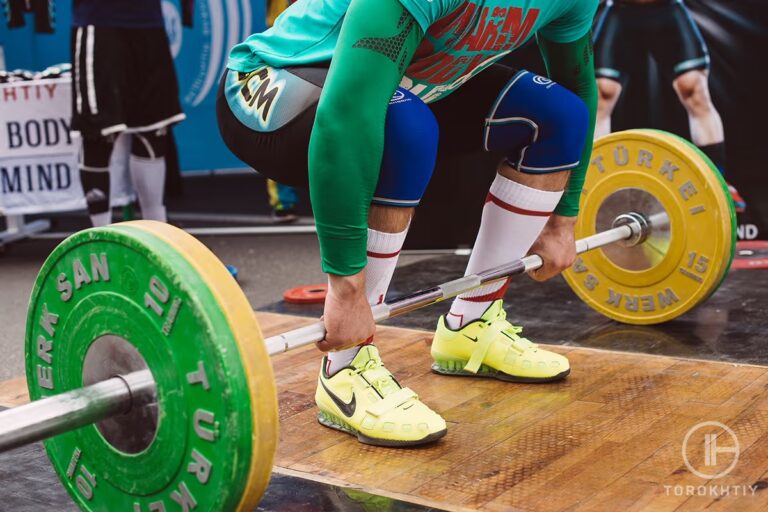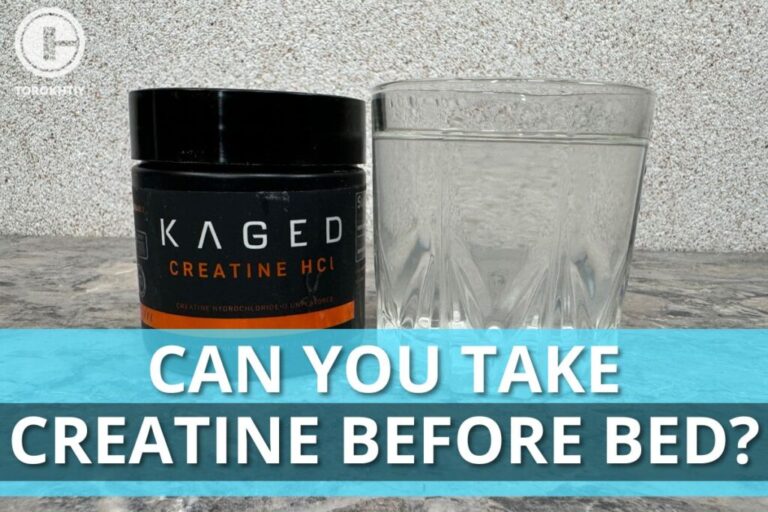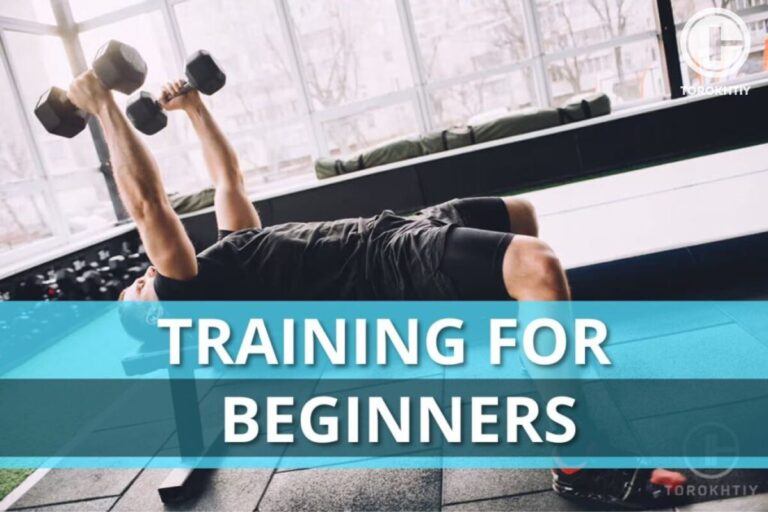How Cold Should An Ice Bath Be For Cold Water Immersion
Ice baths, also known as cold plunges or cold water immersion (CWI), have gained popularity as both a relaxing and therapeutic practice. If you’re taking your first dip into CWI, one of the questions you’ll have is: how cold should an ice bath be?
This article will discuss the ideal cold plunge temperature through a scientific lens. We’ll also delve into preparation methods, including how much ice for ice baths to use, how to keep the water cool, how long to stay inside, and more.
How Cold Should An Ice Bath Be? Ice bath temperature should be 1-15°C/32-59°F to trigger physiological responses in CWI therapy without overwhelming the body. You can adjust the cold plunge water temp to your preferences. The colder the water – the less time you should be in.
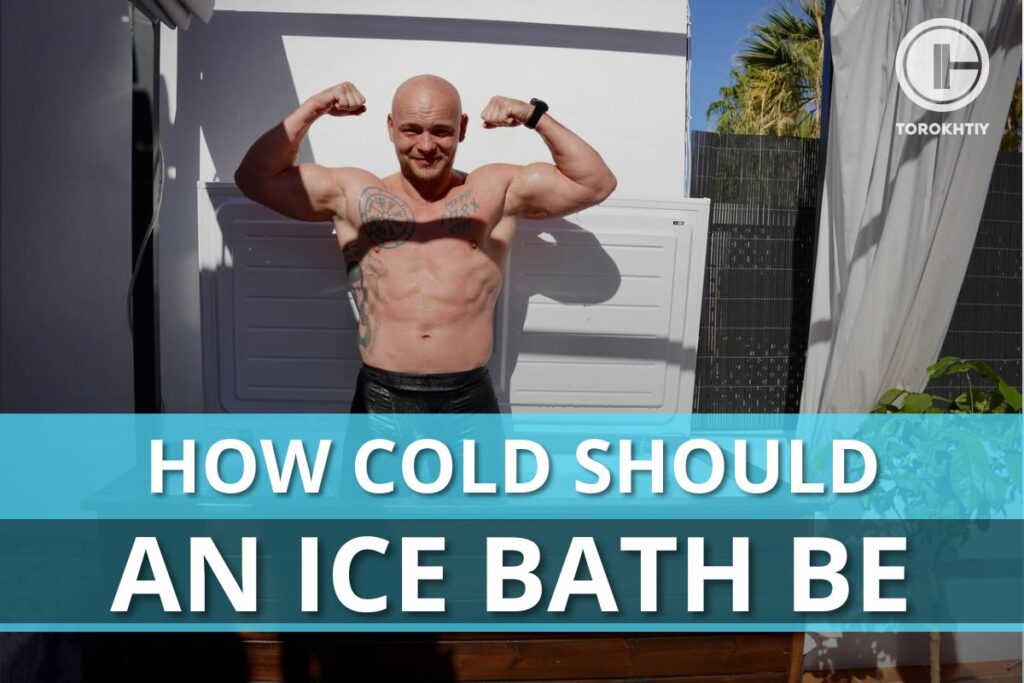
What Is The Optimal Temperature For Ice Bathing?
So, how cold should a cold plunge be and does temperature even matter? The short answer, according to experts, is from 1 to 14°C/34 to 57°F. If you go to, for example, a sauna or bathhouse offering cold plunges, this will be the setting you will most likely find. But this number isn’t random, so let’s look at the science behind why it was chosen.
Although submerging yourself in cold water as a form of physical and mental therapy has been around for thousands of years, modern-day cold plunging draws inspiration from swimming in icy waters. This practice is most commonly associated with Nordic culture, where it’s upheld to this day both for traditional and medicinal value.
Today, Danish scientist Dr. Susana Søberg is one of the leading experts in CWI. She has published research papers and books examining the effects swimming in cold water has on the human body. In Dr. Søberg’s most relevant work, she found that young, healthy winter swimmers are more resistant to cold, generate more heat with less energy, react better to temperature shifts, etc. In short, their bodies are better acclimatized.
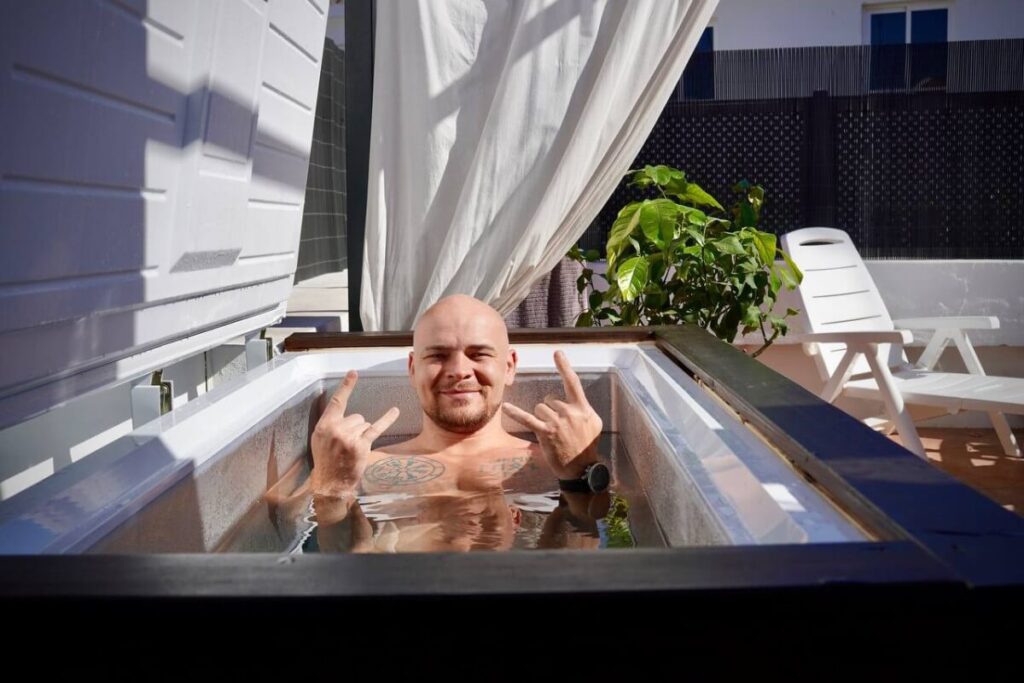
In her book “Winter Swimming: The Nordic Way Towards a Healthier and Happier Life” she explains the principles of winter swimming common with Danish citizens and the health benefits that come from this practice. Specifically, she mentions healthy adults who swim about 2-3 times per week in a temperature range of around 12°C (53.6°F)
Why is this relevant? Well, the bigger picture is that, on average, regular winter swimmers had lower blood pressure, lower baseline heart rate, and even burned excess calories faster than the general population. In conclusion, spending time in cold water can improve your cardiovascular health, metabolism, and immune system, reducing the risk of common lifestyle diseases such as hypertension, diabetes, dyslipidemia, obesity, and similar. Other studies into cold water immersion have measured similar effects.
How To Make Your Ice Bath Cold?
One of the challenges of making an at-home ice bath is maintaining the temperature throughout the session. It’s not as easy as just dumping ice into a bathtub and dipping in. Here are some useful tips on maintaining the perfect ice bath temperature:
1. Start With Cold Water
One common mistake we see people make when creating an ice bath is filling the tub with regular lukewarm water, dipping in, and then adding ice. The idea is to avoid surprising your body with a sudden temperature shift, however, that shock is the main point of cold exposure therapy.
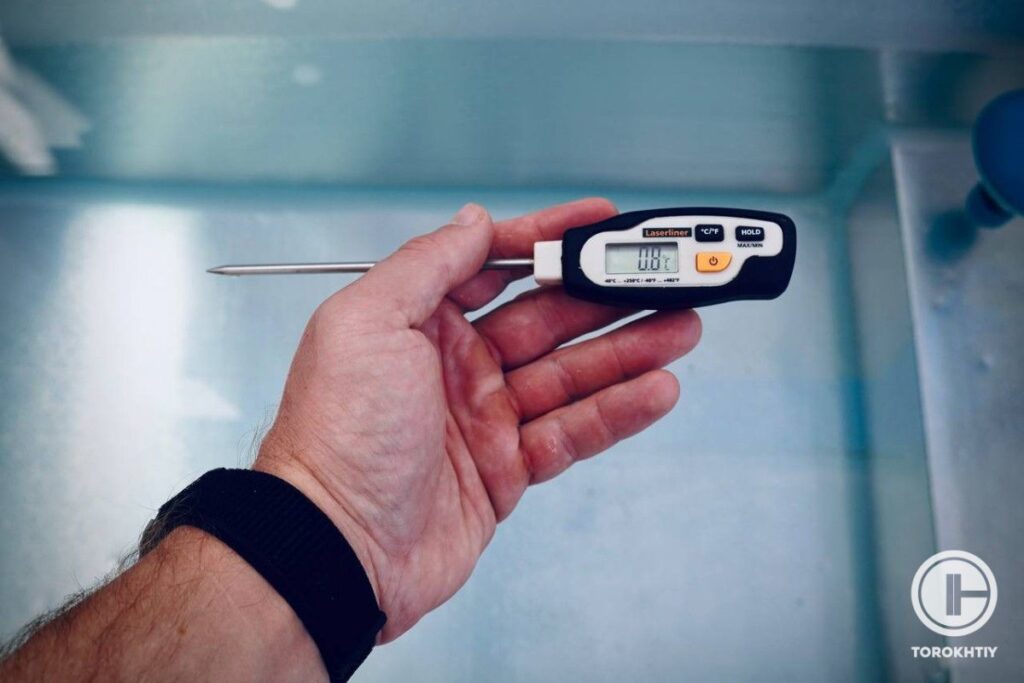
Start by filling your tub with cold tap water. If you have a modern water heater, chances are you can set it to desired temp right away. If not, simply measure the initial temperature and then add ice until it’s low enough.
2. Stir The Ice
Adding ice to your tub is just half the job. To make sure it’s evenly spread, stir it around. Next, measure the temperature at different points in the tub to ensure it’s equally cool throughout.
3. Get An Ice Bath
There are tons of tips online on how to create your own DIY ice bath inside a regular bathroom tub. However, between having to manually manage the temperature and the high water wastage, if you plan on cold plunging being a regular part of your life, it’s best to get an actual ice bath. They’re built specifically to keep the water cool, clean, and fresh with minimal hassle.
4. Keep It Cool
Most people making ice baths do so in the bathroom at room temperature. If that’s the case, make sure that the heater is off. However, if you happen to be making an ice bath somewhere else, for example, in your backyard, avoid heat sources such as the sun. It’s best to keep an ice tab in a naturally cool environment, such as a basement, garage, or even a cellar. Obviously if you live in one of the colder countries you can just leave the barrel outside and cover it from dust etc. and it will be ready anytime you want.
How Long Should You Stay In The Cold Bath?
So far, we’ve established the ideal ice bath temp. The next common question is: how long should you ice bathe for? If you want to maximize the benefits, the recommended time spent in the ice bath is around 15 minutes, for about 2-3 times per week (48-72 hours between sessions). Referring back to Dr. Søberg’s study, she notes her subjects took swims 2-3 times per week and that 11 minutes is a minimal threshold to reap the health benefits.
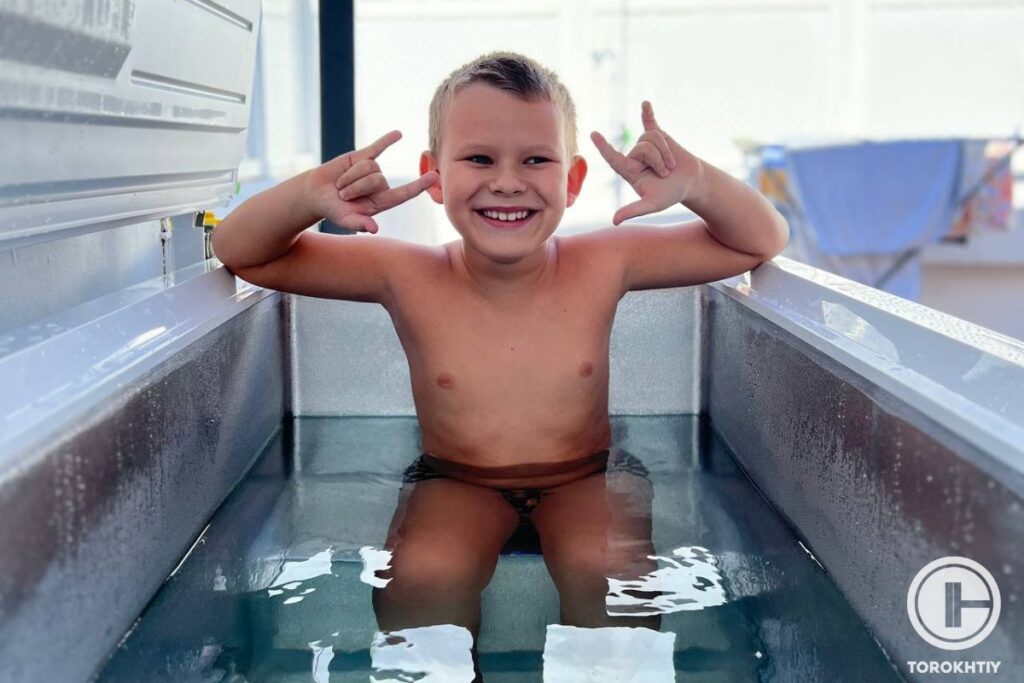
Around 15 minutes seems to be a magic number for other benefits, too. For example, a different study found that 11-15 minutes of CWI at roughly 11-15°C (roughly 52-59°F) reduced muscle tension and soreness after an intense workout. Not only that, the study also concluded that CWI improved recovery rate times compared to passive recovery. Additionally, another study looking at the mental health benefits of cold water immersion found that after a single 20-minute immersion at 13.6°C, subjects reported lower tension, anger, depression, fatigue, and confusion.
Here’s a quick summary of how much time to spend in an ice bath:
| Duration | Temperature (°C/°F) | Interval |
|---|---|---|
| 1-3 minutes | Between 1-9°C / 34-48°F | Can be applied daily |
| 30-60 minutes | Around 14°C / 57°F | Every 48-72h |
Who Should Avoid Ice Bathing?
It’s important to mention that, like any form of physical therapy, cold plunging should not be undertaken without approval from a medical professional, regardless of your perceived health and fitness level. Generally speaking, cold plunging is not recommended for people with heart, blood, and autoimmune disorders that can be triggered by cold. If your family has a history of, for example, heart disease, high blood pressure, respiratory issues, or similar, make sure to get a checkout even if you haven’t developed these conditions. Cold exposure could trigger them prematurely for you. Additionally, people with circulatory problems, damage to their blood vessels, and diabetes are also recommended not to cold bathe without a medical expert’s approval.
Cold Therapy Tool We Recommend To Make Your Ice Bath Cold
Ice Barrel 300
- Dimensions: 35.5”W x 30.5”H
- Weight: 61 lbs
- Material: Recycled plastic
- Shape: Cylinder
- Installation type: Place anywhere
- Capacity: 77 gallons
- Package: Tub, lid, chiller plug, user manual, warranty
- Warranty: Lifetime
- Extra features: Built-in seat, chiller port, drainage port
- Recommended by Athletes: Brian Mazza, Brooke Wells
You don’t have to spend hundreds of dollars per month on expensive sauna and wellness spa sessions to take a cold bath. Plenty of people do them at home using ice baths. If you plan on doing that, then the tub we recommend getting is the Ice Barrel 300. The Ice Barrel 300 is a great way to get a professional cold plunge experience at home. Its home-sized, round shape makes it easy to fit into rooms, even in corners.
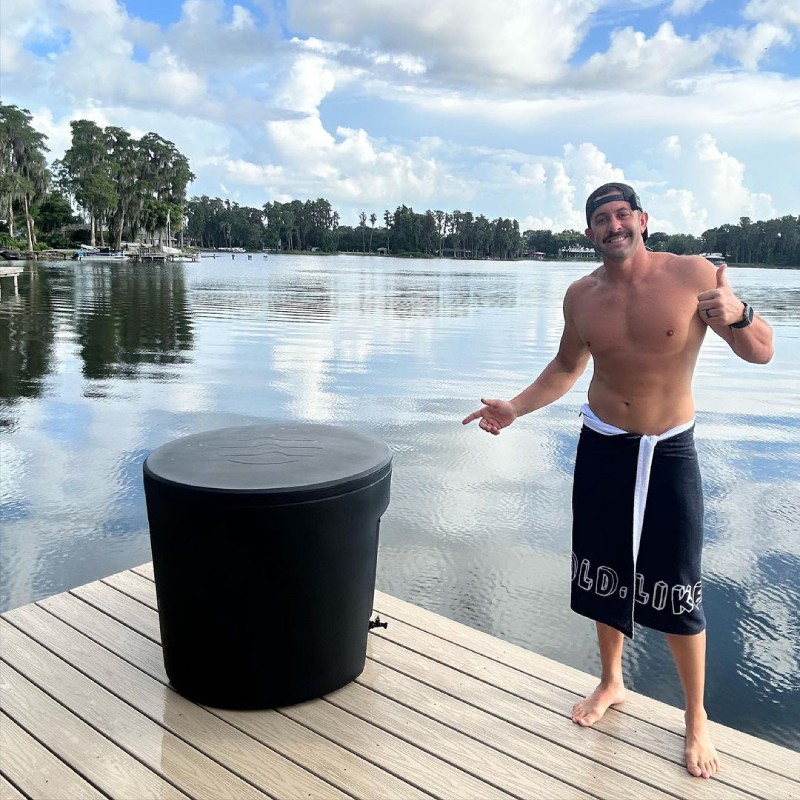
It is built for users up to 6’2” and 250 lbs, accommodating a large number of people. The built-in drainage port ensures quick and easy emptying, and the chiller port, coupled with insulation on all sides, maintains an ideal temperature. A small inside seat will make extended sessions more comfortable, while the UV-resistant isolation keeps water cool for days. It’s also made in the U.S.A. and backed by a lifetime warranty. With a price below average, the Ice Barrel 300 offers an excellent blend of quality and affordability.
FAQ
Is 5 Degrees Too Cold For An Ice Bath?
Generally, 5°C is considered low for an ice bath, but definitely not too cold. The advantage of that temperature is that you can spend less time inside because the stimulus is much stronger. The recommended temperature for ice bath therapy, for beginners, is around 14°C, or if you want to start with brief deliberate cold exposure right away, start with 9°C and give it a test ride. With time, if you will get more cold resilient/adapted, try lowering temp.
How Do I Make My Ice Bath Colder?
Start by adding a real-time temperature monitor to help you assess the ice bath temperature. If necessary, add more ice to the tub. Make sure to stir the water to spread the ice evenly across. An insulated bathtub will keep the water cool for longer. However, the easiest way to keep the ice water cool is simply using a water chiller.
Is 10C Cold Enough For A Cold Plunge?
The idea behind the cold exposure is that the lower the water temperature is, less time you will need to spend inside. Even 15°C is fine, you will just need to spend more time in. Check our protocol recommendations and find what works for you.
Conclusion
To summarize: how cold should an ice bath be? Anything between 1-14°C/34-57°F can work, but it depends on the individual. It’s low enough to trigger major physiological responses associated with cold, without being overwhelming. With 1-3 min per session in 1-9°C / 34-48°F and 11 minutes in a week, or 30-60 minutes per session in around 14°C/57°F for about 2-3 times per week, you’ll most likely see steady health and general wellbeing improvements. If you plan on ice bathing at home, the ideal cold plunge temperature is best kept with a dedicated ice bath, fit with proper insulation. To that end, we recommend the Ice Barrel 300 for its outstanding quality for price ratio.
We’d love to hear from you as well. Have you experienced ice bathing or winter swimming before? What effects did you notice from it? What temperature setup do you like most?
Feel free to leave a comment with your thoughts and remember to give us a follow on social media if you enjoy health and fitness content.
Also read:
- How to Cold Plunge at Home
- How to Keep Ice Bath Water Clean
- Ice Bath vs Hot Bath
- Cryotherapy vs Ice Bath
- Cold Shower vs Ice Bath
- Do Ice Baths Burn Fat
- Ice Bath Before or After Workout
- When to Take an Ice Bath
References
- Aryane Flauzino Machado, Paulo Henrique Ferreira, Jéssica Kirsch Micheletti, Aline Castilho de Almeida, Ítalo Ribeiro Lemes, Franciele Marques Vanderlei, Jayme Netto Junior, Carlos Marcelo Pastre, “Can Water Temperature and Immersion Time Influence the Effect of Cold Water Immersion on Muscle Soreness? A Systematic Review and Meta-Analysis” – Sports Medicine vol. 46 (2016), 503-514
- Dr. Susanna Søberg: How To Use Cold & Heat Exposure To Improve Your Health | Huberman Lab Podcast, Research Hub https://www.researchhub.com/post/960/dr-susanna-sberg-how-to-use-cold-heat-exposure-to-improve-your-health-huberman-lab-podcast (accessed Jan. 21, 2023)
- John S. Kelly, Ellis Bird, “Improved Mood Following a Single Immersion in Cold Water,” Lifestyle Medicine 3, no. 1 (2022): e53.
- P. Srámek, M. Simecková, L. Janský, J. Savlíková, S. Vybíral, “Human physiological responses to immersion into water of different temperatures” – European Journal of Applied Physiology vol. 81, no. 5 (2000), 436-442
- Susanna Søberg, Johan Löfgren, Frederik E. Philipsen, Michal Jensen, Adam E. Hansen, Esben Ahrens, Kristin B. Nystrup, Rune D. Nielsen, Christine Sølling, Anne-Sophie Wedell-Neergaard, Marianne Berntsen, Annika Loft, Andreas Kjær, Zachary Gerhart-Hines, Helle H. Johannesen, Bente K. Pedersen, Kristian Karstoft, Camilla Scheele, “Altered brown fat thermoregulation and enhanced cold-induced thermogenesis in young, healthy, winter-swimming men” – Cells Report Medicine vol. 2, no. 2 (2021), e100408
- “What To Know About Cold Plunges” – Cleveland Clinic,https://health.clevelandclinic.org/what-to-know-about-cold-plunges (accessed Jan. 21, 2024)
Why Trust Us?
With over 20 years in Olympic Weightlifting, our team does its best to provide the audience with ultimate support and meet the needs and requirements of advanced athletes and professional lifters, as well as people who strive to open new opportunities and develop their physical capabilities with us.
By trusting the recommendations of our certified experts in coaching, nutrition, dietology, and sports training programming, as well as scientific consultants, and physiotherapists, we provide you with thorough, well-considered, and scientifically proven content. All the information given in the articles concerning workout programming, separate exercises, and athletic performance, in general, is based on verified data. We ensure that you can rely on our professionals’ pieces of advice and recommendations that can be treated as personalized ones which will benefit you and fully meet your needs.
The product testing process is described in more detail here
Author: Jacek Szymanowski
Certified Nutritionist,
M.Sc.Eng. Biotechnology
Performance Architect,
Strength and Conditioning Specialist
With over 30 years of fighting experience, specialization in nutrition coaching for athletes, and expertise in metabolic health and dietary strategies, Jacek offers a comprehensive approach to optimizing your performance and well-being. Backed by a Master of Science degree in Biotechnology, Jacek remains at the forefront of scientific advancements, ensuring that his coaching is always evidence-based and up-to-date.

